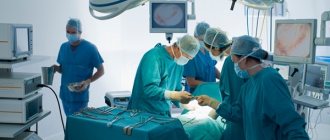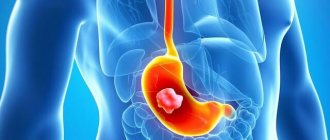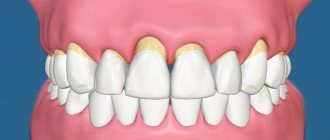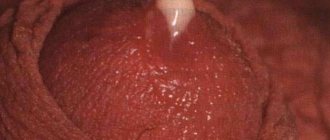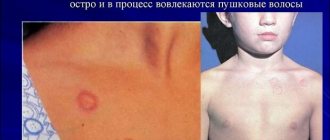Authors | Last updated: 2019
Myoma is a benign tumor of the muscular layer of the uterus. The exact cause of the pathology is not known, but great importance is attached to relative hyperestrogenism - an excess of estrogen against the background of a decrease in progesterone levels. An imbalance of hormones leads to active proliferation of the myometrium and the appearance of a node in the tissues of the uterus. By reducing the concentration of estrogen, you can slow down the growth of fibroids or even get rid of the formation completely.
Pain with uterine fibroids is the leading symptom of the pathology. Pulling, aching, cutting pains are localized in the lower abdomen, radiate to the lower back and sacrum, go down the thigh or shoot under the ribs. Unpleasant sensations are accompanied by disruption of the menstrual cycle, which significantly disrupts the usual course of life, reduces libido, worsens mood and can even cause depression. Knowing where the pain comes from, we can guess the type and location of fibroids, which will definitely help in the diagnosis and development of treatment tactics for this pathology.
Types of uterine fibroids depending on different localization.
Why does fibroid hurt?
It is important to understand: the tumor itself cannot hurt. Small fibroids up to 20 mm in size do not bother a woman and do not interfere with normal life. Such formations are usually called clinically insignificant. Small fibroids do not interfere with conception and childbearing, do not change the menstrual cycle and do not require conservative or surgical treatment.
Problems arise when the tumor grows and reaches 3-4 cm in diameter. This formation in the thickness of the muscular layer of the uterus leads to pain, as well as changes in the menstrual cycle. Menstruation becomes heavy and prolonged, acyclic spotting or even bleeding appears. All these signs, combined with pain, should be a reason to consult a doctor.
On a note
If you have acute pain in the lower abdomen, you should urgently call an ambulance!
https://youtu.be/mJvZhxldMOU
Pain relief for fibroids with medication
Gynecology studies women's diseases and the appearance of fibroids too. Therefore, treatment should be determined by a leading gynecologist. If the size of the node allows the use of drug treatment, a course of hormone therapy will be prescribed.
Combined with diet, it can help significantly. When the tumor is too large and the fibroid has been hurting for a long time, surgical removal is indicated.
Before the operation, the woman will also need hormonal medications to reduce the size of the node, because this will simplify the manipulations and reduce the risks of complications. If the removal of uterine fibroids is postponed for some period of time, it is necessary to anesthetize the manifestations of the tumor. To do this, the doctor may prescribe analgesics - Ibuprofen, Paracitomol. They are effective for menstrual pain, as well as for the manifestation of fibroids.
You can reduce pain if you normalize the level of estrogen in the body. Combined oral contraceptives (COCs) are perfect for this. The drugs in this group include Zoladex, Noverin, Duphaston, etc. Your doctor will help you determine which of them is best to use. In modern pharmacology, there are non-hormonal drugs that can also suppress the development and symptoms of fibroids. Such medications include Oleksin. The drug is based on active components and substances obtained from peach leaves.
If the myomatous node is expressed not only by pain, but also by bleeding, this can lead to anemia, i.e. a drop in hemoglobin levels. To restore it, you need to consume iron-containing vitamin complexes.
Possible nature of pain
Pain syndrome with fibroids is characterized by the appearance of a wide variety of unpleasant sensations. The nature, intensity and localization will depend on the following factors:
- Location of the myomatous node: in the muscular, submucosal or subserous layer. We wrote about the characteristic features of different types of knots in a separate article;
- Tumor size: large nodes are more likely to cause pain;
- Number of nodes: the more there are, the higher the likelihood of severe symptoms;
- Presence of concomitant pathology: with the simultaneous development of endometriosis or endometrial hyperplasia, pain may be more intense;
- Course of the disease: with or without complications;
- Individual sensitivity threshold.
If pain occurs, a woman should consult a doctor to determine its cause.
Based on the nature of the pain syndrome, one can judge the course of the disease and also suggest the development of complications.
Diagnosis of fibroids
If your back constantly begins to hurt, your periods have lengthened, become more abundant, discomfort has appeared in the vagina, a feeling of fullness in the abdomen - you should contact a gynecologist or get a consultation by e-mail and undergo a diagnosis of fibroids. Myoma often does not bother you at an early stage of development and clearly manifests itself with increased growth. The doctor discovers the formation during a routine examination or when filing complaints, and sends the patient for diagnostics to confirm the diagnosis. Diagnostic testing includes:
- Ultrasound with a transvaginal sensor - this type of diagnosis allows you to identify nodular formations at an early stage of development and determine the size of fibroids.
- Dopplerography and echography – blood flow inside a tumor-like formation is studied.
- Magnetic resonance imaging - the structures of the nodular formation are studied.
- Endoscopic and x-ray examination.
- Laparoscopic diagnostics are performed as prescribed by the doctor.
Option number 1: uncomplicated uterine fibroids
Characteristics of pain syndrome with uterine fibroids, which occurs without complications and concomitant pathologies:
- Pain that is constant or occurs immediately before menstruation, as well as during monthly bleeding;
- Drawing, aching pain in the lower abdomen, radiating to the lower back, sacrum, coccyx, groin, left and right hypochondrium (depending on the location and size of the node);
- Unpleasant sensations of mild or moderate intensity.
Important point
A change in the intensity or location of pain indicates the development of complications and is a reason for an urgent visit to the doctor.
Elimination of pain syndrome
To get rid of the negative symptoms of uterine fibroids, the patient needs to undergo a comprehensive examination. Only based on the results obtained, the doctor can determine which course of treatment to choose, prescribe medications or instrumental procedures. Searching for pain relief on your own can have negative consequences.
Products that do not require a prescription
Moderate pain can be relieved with non-steroidal anti-inflammatory drugs (Ibuprofen, Paracetamol). Such analgesics are available at any pharmacy without a prescription, but do not forget about contraindications, side effects and compliance with the treatment regimen. Long-term use of such medications negatively affects the gastrointestinal tract, causing gastritis and ulcers.
Hormonal medications
Hormone therapy is the main method of treating benign tumors in the uterus. Usually prescribed are Goserelin, Triptorelin, Leuprorelin, Mifepristone, Buserelin, which affect a woman’s hormonal levels, cause artificial menopause and help stop the development of fibroids.
Sedatives
In some cases, the use of sedatives may be required. They do not have an analgesic effect, but reduce psychological stress and stabilize the patient’s emotional state. Prescribed before surgical procedures.
Exposure to heat
Heat applied to the lower abdomen promotes rapid muscle relaxation, increased blood circulation, and pain relief. To do this, you can use an electric heating pad or a rubber heating pad with warm water or a compress. The effect of heat lasts an average of 10 minutes, after which the skin needs a short break to cool down. You can take a warm (not hot!) bath. But any massages using warming rubs like Menovazin are undesirable for fibroids.
General overheating of the body (ultraviolet radiation, bath, sauna) increases metabolic processes. This leads to active metabolism in tumor cells, which accelerates its growth and increases painful manifestations. Women should be especially careful with the arrival of summer. Open sun is contraindicated for uterine fibroids. You can only be on the beach under a canopy, an umbrella or in the evening (morning).
Diet and healthy lifestyle
A healthy lifestyle is not only a preventive measure, but also an effective help for women who have already been diagnosed with myomatous formation. Proper nutrition and exercise improve overall tone and maintain the patient’s normal weight. Crowded intestinal loops cause additional pressure on the tumor and constipation.
Alcohol, red meat, sugar, and carbohydrates should be excluded from the diet. It is better to give preference to vegetables, fruits, lean meats and fish, and dairy products.
Physical activity should be treated with caution. For women who suffer from pain, weights over three kilograms are contraindicated. Lifting more weight strains the abdominal muscles and increases intra-abdominal pressure. This will lead to disruption of nutrition of the myomatous node of the subserous and interligamentous type.
As additional therapy, decoctions and infusions of medicinal herbs (hemlock, boron uterus, Rhodiola, flaxseed) are used.
https://youtu.be/O2wcq-Ugkd4
Sex as a treatment
Normalizing blood circulation in the pelvic organs improves the patient’s general condition and helps relieve pain. Therefore, it is very important for a woman to have regular sex life and ensure that sexual contact ends in orgasm. Otherwise, there is no outflow of blood from the genital organs, which only provokes the development of the tumor.
This advice makes sense when the woman does not experience discomfort. If pain occurs during sexual intercourse or pressing on the lower abdomen, this is an alarming symptom that should be reported to your doctor.
Relaxation and Meditation
Simple relaxation will help relieve tension and discomfort. It is enough for a woman to lie on her back, placing a pillow or a blanket under her knees. Watch your breathing, it should be even and deep, your muscles should be relaxed.
More complex methods include meditation, visualization, auto-training, and biofeedback. It is better to master these techniques with a trainer so that they bring maximum benefit.
Peace of mind and inner harmony will help a woman accept the fact of the disease and cope with it. Yoga therapy is good for this, but it is important to choose the right set of exercises. Not all poses (asanas) are suitable for women with uterine fibroids.
Surgical intervention
Modern medicine offers women minimally invasive methods of combating myomatous nodes: uterine artery embolization and FUS ablation. In addition, there are:
- myomectomy;
- hysterectomy;
- myolysis;
- radiofrequency ablation.
If a woman has been diagnosed with uterine fibroids, it is better not to wait for it to resolve, but to begin treatment immediately. The larger the tumor, the more difficult it is to get rid of it. The pathology is especially dangerous for expectant mothers, causing not only difficulties during pregnancy (uterine tone, miscarriages), but also deviations in the development of the child (hip dysplasia, skull deformation, etc.). Regular gynecological examination and ultrasound of the pelvic organs will help to detect and eliminate fibroids in time.
Localization of pain in different types of tumors
The nature of the pain syndrome depends on the location of the myomatous node:
Submucosal fibroid
A tumor growing in the submucosal layer of the uterus makes itself felt by pain in the lower abdomen. Unpleasant sensations radiate to the perineum, occasionally to the tailbone or groin area. The pain is weak, almost not noticeable with small fibroids. As the formation grows, there is an increase in unpleasant sensations, the appearance of nagging and aching pains above the womb. In most cases, discomfort occurs only during menstruation and a few days before it, however, with large tumor sizes, the pain syndrome can become permanent.
Pain with submucosal uterine fibroids is very similar to algomenorrhea, which occurs in many practically healthy women during menstruation. It is quite difficult to distinguish ordinary discomfort during menstruation from the pathological process associated with the formation of a tumor. In both cases, pain appears in the first days of the cycle: pulling, aching, less often cramping. Unpleasant sensations persist for 2-3 days, after which they gradually subside.
If pain during menstruation has significantly changed its character or other alarming symptoms have appeared, you should consult a doctor to rule out the presence of uterine fibroids.
The following symptoms may indicate the presence of uterine fibroids:
- The pain persists for more than 3 days and/or does not subside towards the end of the menstrual flow;
- Discomfortable sensations occur not only during menstruation, but also on any day of the cycle;
- The pain did not always exist (that is, not from the first menstruation), but appeared in adulthood;
- Unpleasant sensations intensify after several months or years, which indicates tumor growth;
- The pain is accompanied by uterine bleeding, an increase in the size of the abdomen, and impaired urination and defecation. Such symptoms do not always indicate the development of fibroids, but in any case they require consultation with a doctor. The final diagnosis can be made by ultrasound, hysteroscopy and other studies as indicated.
On a note
According to many women, submucous fibroids usually hurt immediately before menstruation and during the first three days, after which the discomfort subsides. In some cases, the pain is well relieved with antispasmodics; in others, conventional medications do not help. It is worth noting that similar symptoms also occur with other genital pathologies, so you cannot do without consulting a doctor.
Interstitial
The tumor, located in the muscular layer of the uterus, is characterized by the appearance of pain in the lower abdomen and lower back. For a long time, such fibroids remain asymptomatic, and only when they reach 3-5 cm in diameter do they make themselves felt with severe discomfort. At the initial stages, the menstrual cycle is almost not disrupted. As fibroids grow, the contractile activity of the myometrium decreases, which leads to prolongation of menstruation and the appearance of pain in the first days of the cycle. Read more in a separate article about what the size and number of interstitial nodes influence.
Subserosal
A formation growing towards the serous membrane is manifested by nagging pain in the back (lower back), radiating to the sacrum, coccyx, and rectum.
In the presence of multiple nodes, the uterus can increase in size and put pressure on neighboring organs.
Such a tumor can reach large sizes, compressing neighboring organs and leading to the appearance of accompanying symptoms:
- Bladder: frequent and painful urination, urinary retention, excretion in small portions;
- Intestines: constipation, discomfort during bowel movements;
- Nerve plexuses: irradiation of pain into the joints (hip, knee), thigh (one or both sides), left or right hypochondrium, numbness of the legs, crawling sensation and other paresthesias;
- Inferior vena cava: rapid heartbeat, shortness of breath;
- Fallopian tubes: mechanical blocking of the lumen - ectopic pregnancy and infertility.
On a note
It is subserous fibroids that most often cause chronic pelvic pain.
Types of pain with fibroids in the lower back and lower abdomen
Uterine fibroids (MM) are a non-cancerous neoplasm that forms from the muscular layer of the uterine organ, causing pain with fibroids. The disease is more often detected in women over 35 years of age. The pathology is accompanied by a specific clinic.
One of the symptoms is pain. Pain syndrome is considered the first signal that helps diagnose the disease.
Treatment of fibroids is aimed at relieving pain, as well as correcting hormonal balance, which is the root cause of the pathology.
Uterine fibroids in 40% of patients aged 35-40 years. The incidence of pathology in postmenopausal women increases. Myoma may increase its growth during pregnancy if the tumor was not diagnosed before pregnancy. A pregnant woman experiences pain from the very beginning of pregnancy or after some time.
Attention! With fibroids, pain in the lower back or abdomen is a diagnostic sign of pathology, especially at the stage of formation of the tumor.
Often with uterine fibroids, the stomach hurts. This is explained by a change in the nature of menstruation and an increase in the size of the nodes. When myomatous nodes grow, the patient's pain intensity increases.
Pain syndrome may appear at the onset of the disease during sexual intercourse. In some patients, in the early stages of fibroid growth, pain does not bother, but on the contrary, pleasant sensations increase. Severe pain during sexual intercourse is observed even with large sizes of the node.
Sometimes during intimate activities, pain is accompanied by uterine bleeding.
Myoma begins to form due to gene mutations in myometrial cells. A tumor is formed from a single altered cell. Over time, the formation reaches large sizes. If left untreated, it can put pressure on nearby organs.
How does fibroid hurt at the beginning of the disease? As long as the tumor formation is small, it does not cause discomfort. Pain appears only during menstruation. Menstrual bleeding with fibroids becomes profuse. The cycle may change after the node appears. A woman does not always pay attention to minor changes in the body.
Menstruation becomes more painful over time. Menstruation lasts for 2-3 weeks. This forces the woman to go to the gynecologist. The onset of the disease is diagnosed at this time.
If you do not pay attention to changes in the nature of the menstrual cycle, the tumor begins to grow. The uterus begins to increase in size.
Gynecologists have had cases where a woman came to an appointment with a large belly, thinking that she was pregnant (the pregnancy test was negative).
During a gynecological examination, a very large fibroid was discovered, which was compressing the gallbladder, liver, stomach, and lungs. Such cases are considered advanced and are detected infrequently.
What kind of pain are there? As fibroids increase in size, they can cause mild, nagging pain. Most often the lower abdomen or lower back hurts.
If the myomatous node is large enough, it begins to put pressure on surrounding organs.
This leads to dysfunction of the gallbladder (pain in the right side), liver, compression of the stomach (pain in the stomach-gastralgia), bladder (symptoms of cystitis) and rectum (constipation).
Types of pain with MM:
- Pulling.
- Aching.
- Cramping.
- Sharp.
- Spicy.
Acute pain syndrome is rare in patients. This is explained by the relatively slow growth of the tumor. Acute pain can only be observed in advanced forms of uterine fibroids.
Pain sensations can have different localization (lower abdomen, lower back, sacrum, upper abdomen, stomach area).
The nature of the pain syndrome may vary depending on the form of fibroids. If the node is not twisted or is located in the thickness of the myometrium, the intensity of the pain syndrome will be low or moderate. Torsion or the birth of nodes provoke severe pain.
Based on the location of myomatous nodes, they are divided into:
- Submucosal.
- Subserous.
- Interstitial fibroma.
A submucosal myomatous node is a dense neoplasm that forms in the inner part of the myometrium. It can partially protrude into the uterine cavity or be attached to a pedicle.
Such a node greatly increases the duration of menstrual bleeding and increases the intensity of pain during menstruation. Pain with submucous uterine fibroids is cramping in nature.
Its intensity is average.
In some cases, a submucosal nodule may be complicated by its exit through the vagina. In this case, the uterus begins to contract, as during childbirth. The woman feels cyclical cramping pain.
In case of complicated fibroids caused by the birth of a tumor, the patient needs surgical cutting off of the node's stem and curettage (curettage of the uterine organ mucosa).
The subserous node is located in the outer layer of the endometrium. The formations are often located along the anterior or posterior wall of the uterine organ or closer to the cervix. The clinic depends on the location of the nodular formation.
The formation, located on the anterior wall of the uterine organ, presses the bladder, which leads to a frequent urge to empty it.
The pain syndrome is dull in nature. The pain intensifies when emptying the bladder or changing body position (bending forward). Symptoms accompanying fibroids include burning, discomfort in the urethral canal, acute or cramping pain in the lower abdomen during urination. The clinical picture is partly similar to the course of cystitis.
If the knot is on the side of the back, the lower back hurts. The node puts pressure on the wall of the rectum. The pain syndrome is localized in the coccyx area. The woman notes a false urge to defecate, constipation (if the formation is large). The nature of the pain is dull. The pain may spread down the legs.
The serous node can be fixed on the stalk. A complication of such a node is torsion of its legs. In this case, the vessels supplying the nodular formation are compressed. The tissue of the myomatous node begins to necrotize. Provoking factors for overcutting are sexual intercourse and physical labor.
Immediately after the torsion, the woman feels a strong piercing pain that does not go away. A woman in this condition requires urgent hospitalization, as well as removal of the node. Lack of timely assistance can lead to peritonitis or sepsis (the spread of toxins caused by necrosis throughout the body).
The interstitial node is located in the middle part of the muscle layer. A patient with an interstitial node experiences nagging pain during menstruation. The intensity of bleeding during menstruation increases. With prolonged menstruation, the patient often experiences anemia, which is difficult to treat.
If a woman has uterine fibroid pain, antispasmodic and analgesic (painkillers) medications are used. Ancillary medications (sedatives) are also used. Lifestyle and sexual activity are very important.
How to relieve pain? Analgesic medications can be purchased at pharmacies. These include non-steroidal anti-inflammatory drugs. The most common of this group of drugs are Paracetamol, Ibuprofen, Indomethacin, Nise.
Paracetamol and Ibuprofen have low effectiveness. They will not be able to relieve severe pain and severe inflammation. If the pain is more than moderate, they may not help.
For severe pain, Indomethacin and Nise are more effective.
Independent and uncontrolled use of non-steroidal drugs leads to the development of gastritis. Medicines can severely irritate the mucous membrane of the digestive tract. NSAIDs are not indicated for patients with ulcerative lesions of the digestive tube.
Antispasmodic drugs include No-shpa, Papaverine. If fibroids hurt, Papaverine can be used in suppositories. No-silo is used in tablet forms.
The medicine is indicated for use in cases of menstrual bleeding or severe independent uterine spasms outside of menstruation. The therapy helps reduce pain in the lower abdomen due to fibroids caused by uterine contractions.
Sedative medications relieve stress, improve falling asleep and sleep quality. Medicines have a good effect on brain function. During therapy, the woman’s condition improves significantly, her resistance to stressful situations increases, and the frequency of neuroses decreases.
Thermal procedures are recommended for patients with fibroids. A heat source (a warm heating pad, bags of warm sand or beans) is placed on the lower abdomen (uterine area). Heat has an antispasmodic effect and reduces pain intensity.
Attention! Thermal procedures are indicated only if the patient does not have concomitant inflammatory gynecological pathologies in the acute phase.
Diet therapy helps well in the presence of constipation, anemia, and vitamin deficiency. High-quality nutrition improves the patient’s general condition and increases immune defense. Physical therapy (physical therapy) and gymnastics help improve mood and increase blood flow in all organs and tissues. In obese patients, exercise therapy promotes weight loss.
Psychotherapy
Patients with uterine fibroids are often depressed. Psychological training, self-control and relaxation techniques are recommended for patients. All these techniques help cope with depression. Women can practice yoga, swimming, hippotherapy (horse riding).
Patients with uterine fibroids often refuse sex due to fear of pain and complicated course of the disease. If a woman has no risk of complications from uterine fibroids, then sex should not be limited. Regular lovemaking helps to adjust a woman’s hormonal levels, maintain libido (desire), and prevent the occurrence of concomitant gynecological pathologies.
Associated symptoms of the disease
Large tumors lead to a significant enlargement of the uterus, which inevitably affects the woman’s health. The uterus puts pressure on the abdominal organs, props up the diaphragm, which provokes the appearance of various unpleasant symptoms:
- Pain under the right rib with compression of the bile ducts and dysfunction of the gallbladder;
- Shortness of breath and difficulty breathing due to pressure on the diaphragm;
- Heartburn and belching when the stomach is not working properly;
- Pain around the navel, in the left or right side due to compression of the intestines, disruption of its patency, chronic constipation;
- Interruptions in the functioning of the heart due to increased stress on the body.
Treatment of fibroids
Fibroids are treated with medication, hysteroresectoscopy, high-frequency ultrasound, UAE (uterine artery embolization), severe, emergency cases require hysterectomy - removal of the organ.
- Drug treatment - disruption of the interaction of the pituitary gland, hypothalamus and ovaries leads to the development of myometrial pathology. To correct the normal functioning of this chain, releasing hormones are used. In complex, organ-preserving treatment, progesterone receptor antagonists are used. Most often, blockers are used in the treatment of small nodes, to prevent the recurrence of fibroids after removal of the nodes.
- Focused high-frequency ultrasound is used to affect deep tissues. Ultrasound beams are used to treat malignant tumors, fibroids, glaucoma, atrial fibrillation, stop bleeding, and are used in plastic surgery. High-frequency ultrasound creates ultra-fast heating of the desired body tissue, focusing helps to strictly adhere to the treatment area. The tumor is destroyed, the boundaries of the destroyed cellular structures are smooth and clear. After the operation, the lower abdomen will hurt for a short time, and discharge will be observed for several days.
- Embolization of the uterine arteries is an organ-preserving procedure, the essence of which is to stop blood flow in a tumor-like formation using emboli (polymer balls). The procedure is performed through a skin incision in the area of the femoral artery, and is virtually painless and bloodless. Embolization is carried out quickly, the fibroid dies within 24 hours, and the recovery period after the procedure is short. UAE is recommended for single and multiple nodes, with different sizes of tumor formation.
- Monophasic contraceptives - small myomatous nodes are well treated with modern contraceptives. The Mirena IUD contains a hormonal component that affects formations for a long time and inhibits their growth.
- Myomectomy is the removal of myomatous nodes from the muscular wall of the organ while preserving the body of the uterus. Immediately after myomectomy, the lower back pain stops, and the functioning of the pelvic organs improves.
- Amputation (hysterectomy) - in severe cases, if it is impossible to improve the health condition, in the absence of other treatment methods, amputation of the uterus is performed. There are several types of amputation of the reproductive organ: removal of the reproductive organ along with the cervix, preserving the cervix, removal of the organ with the ovaries, as well as a radical method of treatment - removal of the uterus, ovaries, cervix, third upper part of the vagina, lymph nodes and pelvic tissue surrounding the organ.
The development of fibroids is always accompanied by pain; it can appear at an early stage of development, with the development of a large node that compresses neighboring organs. If your kidneys begin to ache, your back hurts, you feel discomfort in the bladder area, you experience pain in your tailbone - get diagnosed for fibroids. Timely treatment of the disease will help avoid serious complications. Blood circulation in the pelvic organs will be restored, your back and stomach will not hurt constantly, you will avoid bleeding, anemia, and maintain reproductive function.
Pain with fibroids during pregnancy: a threat to mother and fetus
According to statistics, up to 4% of all women carry a child due to fibroids. Answers to questions about the effect of myomatous nodes on pregnancy can be found in a separate article. A tumor can behave in different ways:
- Small myomatous nodes stabilize in size or regress, there is no pain;
- Medium-sized uterine fibroids usually decrease somewhat (in 8-27% of women), moderate pain in the lower abdomen persists;
- Large nodes continue to grow, but only slightly (by no more than 25% during pregnancy), the pain may intensify;
- Interstitial nodes often undergo necrosis due to reduced blood circulation, which leads to severe cramping pain.
According to reviews, many women note that during pregnancy, fibroids behave the same way as before conceiving a child. Moderate nagging pain in the lower abdomen and back does not interfere with pregnancy, although it can be taken as signs of an incipient miscarriage or premature birth. Some patients experience complete disappearance of symptoms of the disease. The pain returns after childbirth along with the restoration of the menstrual cycle.
Uterine fibroids can make themselves felt with moderate pain already in the 1st trimester, but more often discomfort occurs in the second half of pregnancy. If the pain intensifies and becomes cramping, you should immediately consult a doctor.
On a note
There is an opinion that a tumor of the uterus provokes toxicosis in the early stages and gestosis in the later stages. Scientists have not been able to find a connection between these conditions and fibroids, so to date this theory has not been proven.
During pregnancy, it is imperative to monitor the condition of fibroids and, if alarming symptoms appear, consult a doctor immediately.
Is it possible to experience pain?
Uterine fibroids in 40% of patients aged 35-40 years. The incidence of pathology in postmenopausal women increases. Myoma may increase its growth during pregnancy if the tumor was not diagnosed before pregnancy. A pregnant woman experiences pain from the very beginning of pregnancy or after some time.
Attention! With fibroids, pain in the lower back or abdomen is a diagnostic sign of pathology, especially at the stage of formation of the tumor.
Often with uterine fibroids, the stomach hurts. This is explained by a change in the nature of menstruation and an increase in the size of the nodes. When myomatous nodes grow, the patient's pain intensity increases.
Pain syndrome may appear at the onset of the disease during sexual intercourse. In some patients, in the early stages of fibroid growth, pain does not bother, but on the contrary, pleasant sensations increase. Severe pain during sexual intercourse is observed even with large sizes of the node.
Sometimes during intimate activities, pain is accompanied by uterine bleeding.
Methods for pain relief
To reduce the discomfort of uterine fibroids, the following drugs are prescribed:
Antispasmodics
Relieve muscle spasms, relax the uterus, eliminate discomfort. A good effect was noticed when prescribed during menstruation and a few days before it. They can be used during early pregnancy as drugs that are safe for the growing fetus. Examples: drotaverine (No-shpa), papaverine.
Directions for use: 1 tablet orally for pain 2-3 times a day. Can be prescribed intramuscularly (in a hospital setting). The course of therapy is up to 7 days.
Nonsteroidal anti-inflammatory drugs
They block the production of prostaglandins, substances that cause pain and inflammation. They act quickly, work for 4-12 hours, allowing you to reduce pain from fibroids both during menstruation and on other days of the cycle. Pregnant women are prescribed only for strict indications and mainly in the second trimester.
Examples: ibuprofen (Nurofen), paracetamol, diclofenac.
Directions for use: orally or intramuscularly strictly according to the instructions, without exceeding the indicated dosage. Self-administration course – up to 3 days. If pain persists, further use of NSAIDs is possible only with the consent of your doctor.
On a note
Analgin-based products cause a large number of side effects, so they are prescribed only for special indications and under the supervision of a specialist.
Hormonal medications also help relieve pain due to fibroids. Medicines selected by the doctor reduce the diameter of the tumor, eliminate pain and associated symptoms. Young women with small fibroids are prescribed combined oral contraceptives. These drugs reduce the amount of blood loss during menstruation, stabilize the level of progesterone and estrogen, which also helps reduce pain.
It is important to understand that all painkillers can only temporarily relieve a woman from the unpleasant manifestations of the disease. The absence of pain does not mean that the problem is solved. To fully treat fibroids, hormonal drugs are used or the question of surgery is raised.
Interesting video about the development of fibroids and how to treat them
How to numb fibroids
There are several methods that can eliminate pain from uterine fibroids. Firstly, it is necessary to conduct a complete gynecological and ultrasound examination, and we must also not forget about passing all the necessary tests. The treatment process for this pathology may be accompanied by the prescription of certain drugs with analgesic and analgesic effects. Medicines that relieve pain must be chosen carefully and carefully.
Over-the-counter products
Non-steroidal anti-inflammatory drugs will help relieve pain even at home. Paracetamol, Meloxicam, Ibuprofen is an approximate list of analgesics that are approved for independent use and can relieve pain from fibroids. But it is important to remember that all medications have side effects. Long-term use of non-steroidal anti-inflammatory drugs can lead to the development of gastritis or non-steroidal gastric ulcers. For this reason, the maximum daily dose must be strictly observed. You cannot take painkillers for uterine fibroids for a long time.
Hormonal drugs
Their main purpose is to treat uterine fibroids. Painful symptoms are eliminated due to the reduction in the size of the node. Treatment is characterized by the use of oral contraceptives and non-steroidal anti-inflammatory hormone drugs
Sedative medications
They are intended to relieve psychological stress, normalize the excitatory process and inhibition in the brain.
Warmth on the lower abdomen
This method can relieve spasms, dilate blood vessels and improve blood flow. As a result, this will lead to a decrease in the severity of symptoms.
Changes in lifestyle and nutrition
Physical activity can improve overall tone, and if you adhere to a balanced diet, this will become a preventive measure against constipation and bloating. A pressing effect on the node may occur due to swollen loops of intestines and an enlarged rectal ampulla. For this reason, following a healthy lifestyle can alleviate the situation.
Relaxation technique
Auto-training can help control mental balance. As a result, the perception of pain, the intensity of which is quite small, will change. You should also try yoga, but the exercises should be simple and not cause discomfort. Otherwise, complications may occur. Swimming and horse riding show excellent results, however, only in an integrated approach.
Sex life
With a full sexual life, the possibility of getting rid of pain is high. Sex can normalize blood flow in the pelvis, which will have a positive effect on the general condition of the node and other organs. The main thing is that there are no unpleasant sensations during the process.
Why does fibroid cause pain in the abdomen or lower back?
Many women who have been diagnosed with uterine fibroids complain of periodic painful sensations that bother them. Some women begin to experience pain even when the fibroids are small, while others experience pain when the tumor becomes large. In fact, there are not many reasons that result in painful sensations, these include the following:
1 Dimensions of education. After the tumor grows to a large size, it causes discomfort to nearby organs, disrupting the blood supply and their function. First of all, in this case, it is the bladder that begins to suffer, since it is located near the uterus;
2 If there is a myomatous submucosal node, it can cause pain;
3 Types of fibroids. Depending on the type of fibroids present, painful syndrome occurs to varying degrees. Even if a woman experiences pain in the head area, this may indicate the presence of a formation in the uterus that needs research and further therapy.
As a result of long clinical studies, experts were able to determine that the nature of the pain directly depends on the type of fibroids. For this reason, if one type of formation is present, a woman may experience nagging pain in the lumbar region, and if another type is present, a woman may experience pain in the left side and buttock.
Causes of pain
Despite the fact that most often uterine fibroids are asymptomatic, some women at the beginning of its development in the body experience painful sensations in the lower abdomen, which gradually intensify as the disease progresses.
In such a situation, it is important to understand what can cause severe pain in the lower abdomen with such a pathology.
In medical practice, the following factors are identified, the presence of which can cause pain in the lower abdomen and lower back:
- The size of the uterus plays an important role, since as the tumor grows, its pressure on nearby organs and tissues increases and the result is a disruption of their normal blood supply. In addition, the normal functioning of these organs is disrupted and most often the bladder takes the hit first.
- In some situations, the cause of pain is the localization of the myomatous node under the uterine mucosa.
- Modern gynecologists distinguish different types of fibroids, each of which can be accompanied by pain in the lower abdomen and lower back.
Studies have shown that the type of fibroid also affects the nature of the pain. It is this factor that explains why, with some types of fibroids, it is the lower abdomen that hurts, while with others, discomfort appears in the lumbar region.
What to do, how to get rid of pain in the lower abdomen with uterine fibroids?
Unfortunately, at a certain stage of the disease, a painful symptom accompanies almost any type of fibroid. Only after conducting an examination and passing all the necessary tests, only a doctor is able to make a decision on prescribing painkillers to a woman. Under no circumstances should you try to ask relatives or friends about painkillers, asking how they got rid of pain, even if they themselves were diagnosed with fibroids. Each course of treatment for fibroids must be prescribed exclusively on an individual basis, so you can cause irreparable harm to your health, not alleviating your condition, but only making it worse. If a woman has severe pain from uterine fibroids and causes her anxiety, the doctor may decide to prescribe surgery to remove it. But in any case, all decisions in this case should be made only by a doctor, because independent treatment in this situation can lead to irreversible consequences.
How to remove pain
If a woman experiences pain, antispasmodics and sedatives can be used to eliminate discomfort. Lifestyle and sexual activity play a major role in the process of pain relief.
Safe and effective pain relievers
To eliminate pain, you can purchase painkillers. A group of such medications includes non-steroidal anti-inflammatory drugs. Most often, women use Paracetamol, Ibuprofen, Indomethacin, Nise.
Paracetamol and Ibuprofen in the case of fibroids have low effectiveness. The drugs will not help relieve severe pain and inflammation. If the pain is moderate, it is advisable to take them. If severe pain occurs, it is better to give preference to the drug Nise or Nimesulide. Such products can also be purchased at a pharmacy without a prescription, but it is not recommended to use them on an ongoing basis. Before using the product, you should consult a doctor and undergo a full examination.
Antispasmodics
Antispasmodic drugs are often used in gynecological practice. Doctors recommend these medications to their patients for painful menstruation. Drugs such as Papaverine and No-shpa are often prescribed for pain due to fibroids.
Papaverine is best used in the form of suppositories, and No-shpa is taken in tablet form. The medicine is indicated for menstrual bleeding or acute uterine spasms that occur outside of menstruation. They help relieve pain in the lower abdomen caused by contractions of the uterus. On the recommendation of a doctor, the products can be used on an ongoing basis. The duration of the course, frequency of administration per day and dose are determined individually.
Sedatives
Sedatives are also used to eliminate fibroids. Psychologists say that any gynecological diseases significantly worsen a woman’s general well-being. When the reproductive organ is damaged, stress occurs in the body, general health worsens and the quality of sleep decreases. Such drugs affect the functioning of the brain. During treatment, the patient's condition significantly improves, resistance to stress increases and the frequency of neuroses decreases.
Lifestyle and nutrition
Changing your diet in some cases helps prevent constipation and reduce the likelihood of vitamin deficiency and anemia. Nutrition should be complete; this will increase the body’s immune defense. A woman also needs physical therapy or gymnastics. Light physical activity will help restore blood flow and improve nutrition of all organs and tissues of the body. If a woman is obese, the intensity of the exercise can be increased.
Sex life
Often, after diagnosis of pseudotumor, women refuse sexual intercourse for fear of pain and complications of the disease process. If there is no risk of complications, then you can have sex. With regular sexual intercourse, a woman’s hormonal levels are normalized and libido is maintained. Such conditions can reduce the risk of developing concomitant gynecological diseases. During sexual intercourse, prostaglandins enter the woman’s vagina along with sperm, which prevent inflammation and normalize the natural secretion of estrogen. If pain is present, it is better to avoid sexual intercourse. Firstly, the woman will not receive the necessary satisfaction, and secondly, complications may arise.
Hormonal treatment
Hormonal treatment is the basis of drug therapy indicated for patients with uterine fibroids. The drugs help stop the growth and subsequent development of the tumor, and in some cases reduce its size. Treatment is carried out with GnRH analogues. Long-term use of drugs with this spectrum of action is not recommended. The duration of the course of therapy is determined by the gynecologist. While taking these compounds, the intensity of pain decreases.

